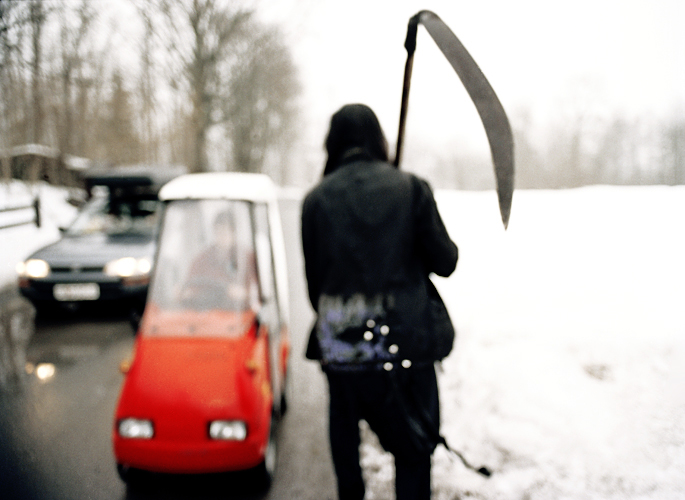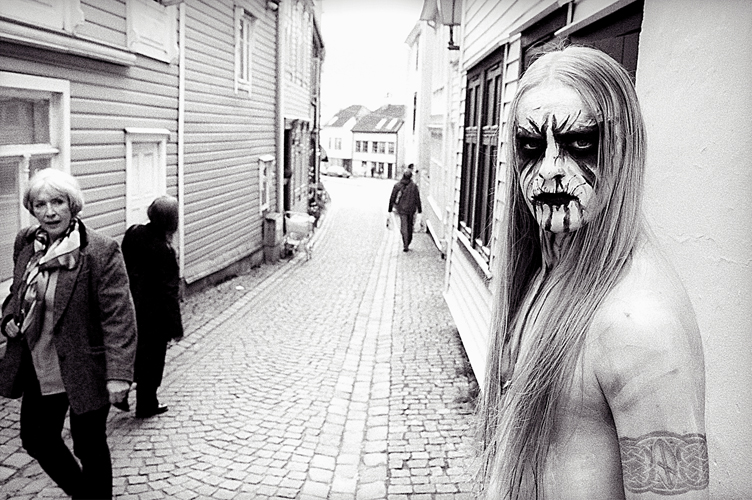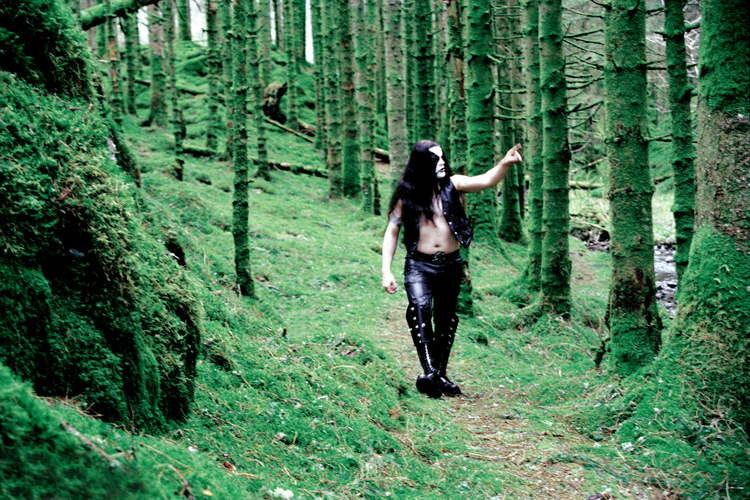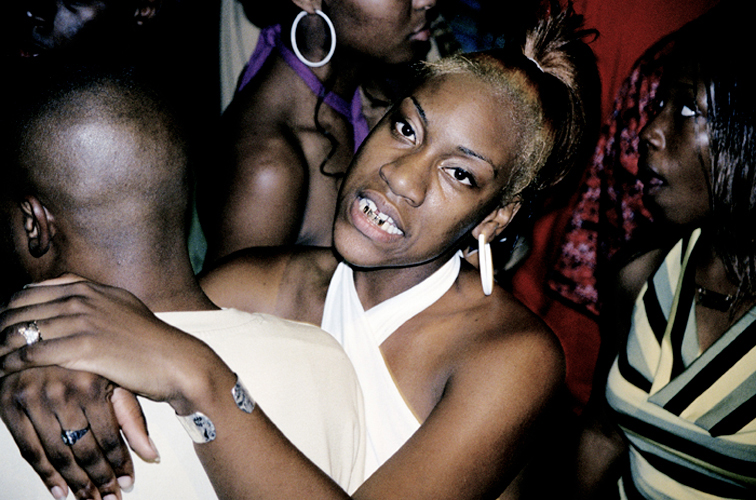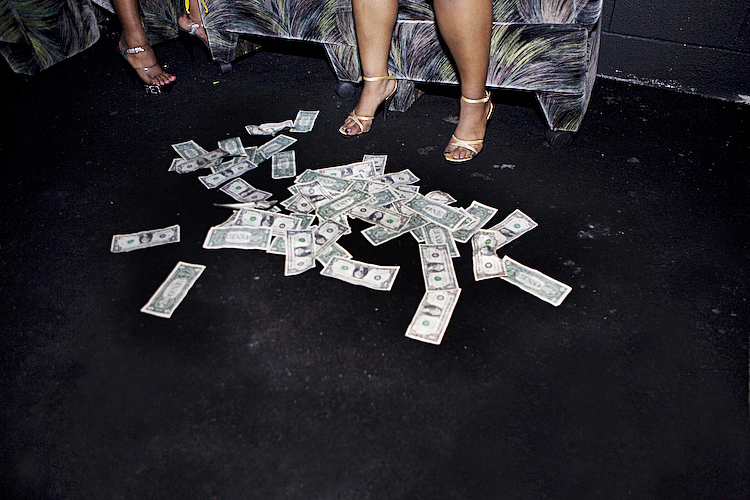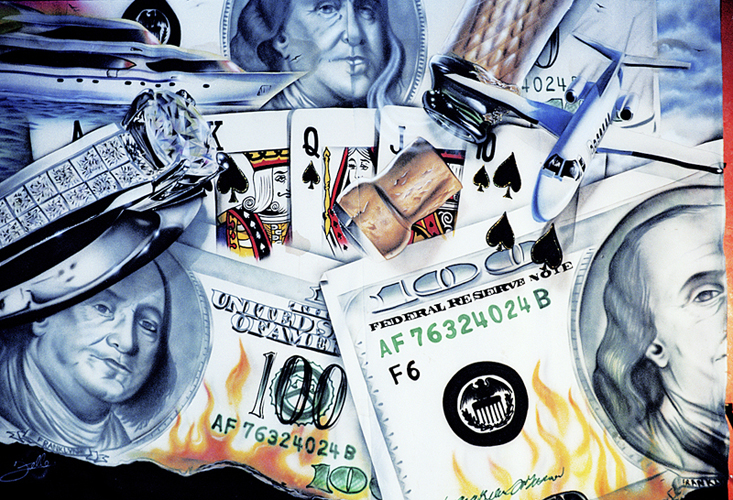Allow me to introduce myself (with black metal and nightclubs)
Hi, my name is Gail, and this is my first post. I’ve been spending a fair amount of time the past few weeks, as any reasonable New Yorker would, thinking about the summer heat and its theoretical consequences on, say, Norwegian black metal enthusiasts. You see, because heavy makeup undoubtedly runs when mixed with sweat, black clothing becomes stifling in the sunshine, and spiked leather gauntlets seem like they’d become uncomfortably heavy, chafing, and waterlogged when filled with a pint of perspiration – and this all seems like it would simply serve to further irritate an already rather grim-minded set of individuals, because who doesn’t get a bit more cranky in the brutal heat, much less suffocating clothing and rapidly failing makeup?
Oh, right, but the PHOTOS. Peter Beste’s images of “True Norwegian Black Metal,” published in 2008, is likely one of the most name-checked visual resources on this controversial genre. What makes Beste’s work compelling is the lack of sensationalism – a scene studded with the odd suicide, murder, sundry dead animals, and arson of the church-sort is ripe for sensationalist gawking in which the subjects become props to be reviled or at the very least studied as freaks/”the other.” Yet Beste guilelessly presents these stone-faced, corpse-paint-spackled men seemingly without any agenda but to show them, juxtaposed often with the idyllic, almost twee surroundings from whence they sprang.
Where Beste captures the momentary encounter between dramatically adorned Kvintrafn and a less imaginative passerby shifts the power dynamic so elegantly in this frozen moment, elucidating a point made by placing these dramatic-looking men in their contrasting (bucolic) surroundings: in their own homeland, worshipping their Norse gods, tossing about their goat heads, they are live specters who do not fit, belong, or make sense.
I was familiar with these images (this book was featured prominently in an office where my husband worked) but not with “After Hours,” a series Beste took at night spots around Houston. I was immediately drawn in to this work – possibly because these subjects seemed to be having, oh, slightly more fun than his glorious corpse-painted scions across the fjords. Here Beste depicts the stars, scenesters, outlandish decor, and very specific trappings of H-Town after dark in what feels like loving detail.
Beste manages to shoot a faraway-eyed woman tightly locked in a slowdance with the same equity as the crumpled bills at the feet of strippers at the Blur Flame Cabaret; it’s not as though he is dispassionate here, but devotedly relating an aesthetically glorious spectacle with its own profound signifiers and specific uniforms. Through the care and rigor taken with this series, Beste’s bright images of humanity mid-celebration transcend mere glimpses of “debauchery after dark” to become something more culturally sublime and richly codified, in the way his Norwegian metal-men become sad warriors without a crusade when fixed in his lens.

